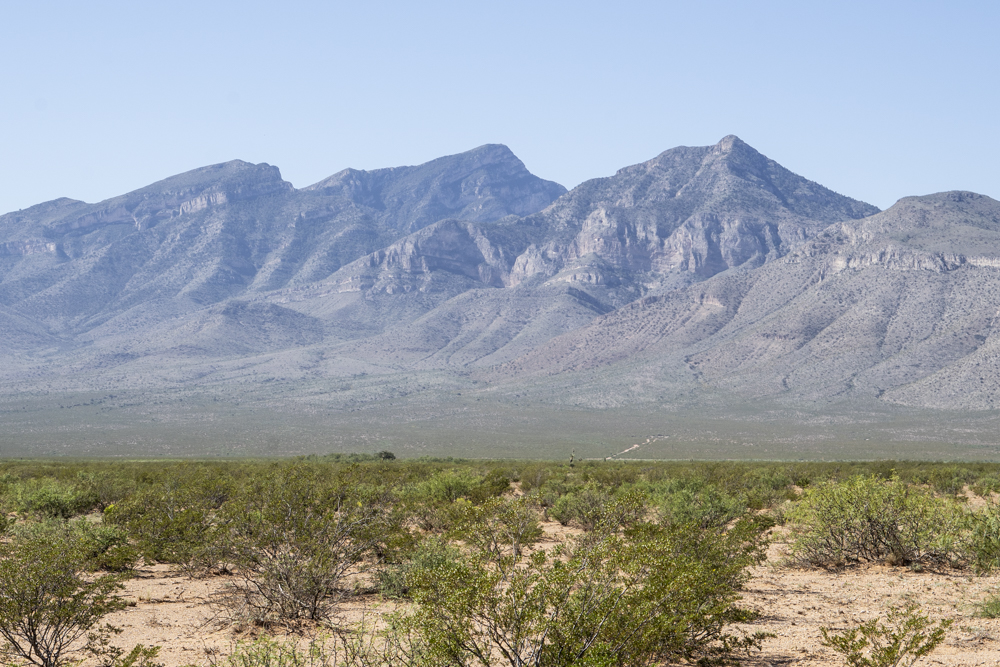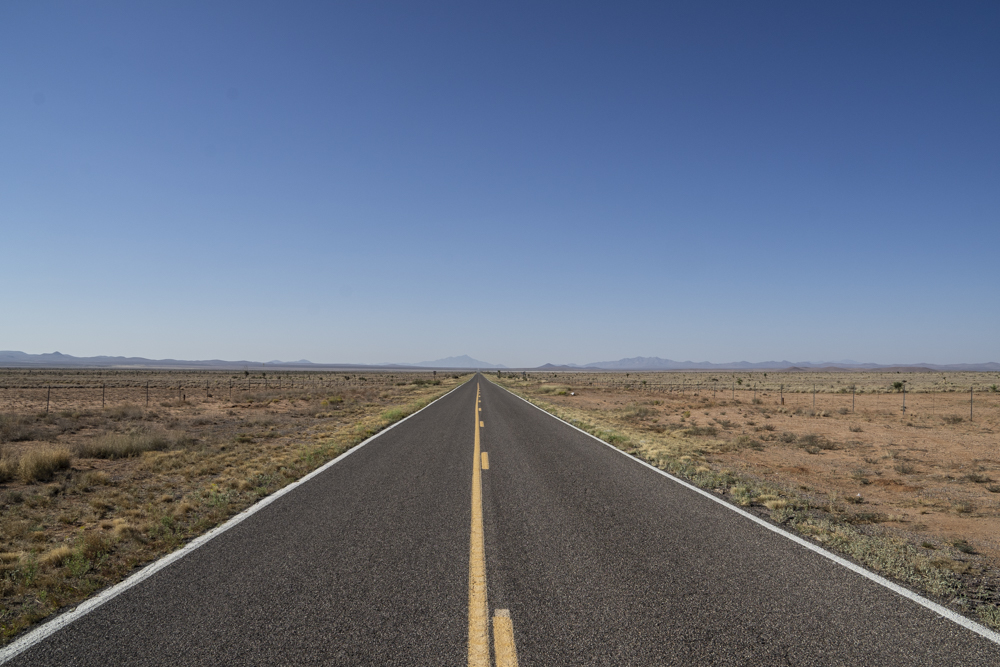The Big Hatchet Mountains
Last week, I drove south. En route to Tucson, Arizona, I took the long way through a backcountry by-way showcasing New Mexico’s geologic past, then spent the night in Las Cruces at the Big Chili Inn, home of the world’s largest chili pepper and plastic-encased mattresses. In the morning, I went west and south into the bootheel of New Mexico. Butting against Arizona to the west and Mexico to the east and south, the bootheel feels like its name. Some cowboy, standing tall in the north country, has Mexico under his heel.
This is basin and range country: massive, flat, open valleys with disconnected mountain ranges strewn randomly. The basins have no outlet, and what little water falls here, less than eight inches a year, pools here, waiting to evaporate. It doesn’t wait long.
The Continental Divide Trail begins just a few miles farther south, and if you’re ambitious, you can follow it 3,028 miles on foot to Canada. The Little Hatchet and Big Hatchet Mountains stretch northwest from the western Mexican border.
In a state where the middle of nowhere is where you are most often, the Big Hatchet Mountains are twenty-four miles and an hour’s drive from the nearest US town, which has a population of fifty. The western edge of Mexico, at the inside of the bootheel, is barely nine miles as the vulture soars or the migrant walks.
In my zippy little car, I cruise south. Stopping to take photos along the road, as I am wont to do, I attempt to capture the expanse of desert, the mountains climbing into the blue sky as the only relief from the cactus, the dust in the basin, and the temperature, not yet at noon, already at 98º. I haven’t seen another car for twenty minutes, but seemingly, within seconds of pulling over, a border patrol vehicle appears.
Do you need help?
No, I say, just taking photos.
Ok, I’ll get out of your way. He pulls away, drives 200 yards south, and pulls off the road, engine running, air conditioning on full blast as the day’s heat builds. I expect my license plate is being checked. Who stops here? Maybe a scheduled pick-up or a water cache drop-off.
I finish my photos and continue south, driving past the parked patrolman. I do my thing, poking around, stopping here and there. SUVs, pickups pulling trailers with ATVs, vans pulling cargo trailers pass me, all border patrol vehicles. We leapfrog each other. My dusty green car hopping around the black and white federal rigs, just me and thirty of my closest border patrol buddies hanging out in the desert.
The road, a chip-sealed tar and gravel affair, is mostly straight, deviating only to pass through the gap dividing the Little Hatchet Mountains to the north from the Big Hatchet Mountains to the south. As I move farther south on this simple, two-lane road, the shoulder lines and center stripe disappear. Along one or both sides appears a secondary dirt road, like the frontage road of interstate highways through big cities and wide-open states. I ponder this. And, then, I find old tires in a heap at the edge of the parallel road. Chained together, like the drags used to smooth snow for skiing or level a rodeo arena, they are used to clear the dirt lanes.
I stop again, pulling onto one of these dirt tracks; I park in the scant shade of a lone juniper. I scan with my binoculars, drink some water—a routine stop when exploring. Pulling back onto the paved road, I wait for a patrolman to pass, knowing I will only leapfrog again. But he stops—the same officer.
If you walk away from your car, make sure you drive over your tracks when you leave.
I must have had a blank look.
He gives me the movie-famous hand sign, index and middle fingers gesturing from eyes to the ground. We’re looking for tracks. This is a dangerous place. Be careful out here.
Yeah, yeah, I say, realizing the frontage roads force anyone walking through the desert to cross the swept-clean dirt that records every person who passes from desert to pavement. As he pulls away, I think to myself, I will cover every track I find. And I will offer water to any person I see.
Although it is a struggle to be human in this time and in this cultural landscape, if the hatchet comes down, I won’t surrender my humanity to border patrol.



Beautiful … and chilling. Well done.
Thank you, Denny. There are so many lives unseen in this world; too many end in unknown ways in these forgotten places.
These are sadly interesting times. New concerns have entered into my more innocent (naive? privileged? safe?) life. Some enrich my lens and some threaten my resolve to engage. I can’t imagine someone tracking me. I, no doubt, have a limited range of understanding how the world is threatening and whose team I really want to be on. Never in doubt is my position on Team Tamara.
❤️
Thanks for taking us with you my big hearted sister.
I’m happy to have you along! ❤️
Thank you, Tamara, for a beautiful–if somewhat chilling–testament to both the wonder and sorrow of this vast land called the United States of America.
Indeed. I vacillate between wonder and horror daily. ❤️